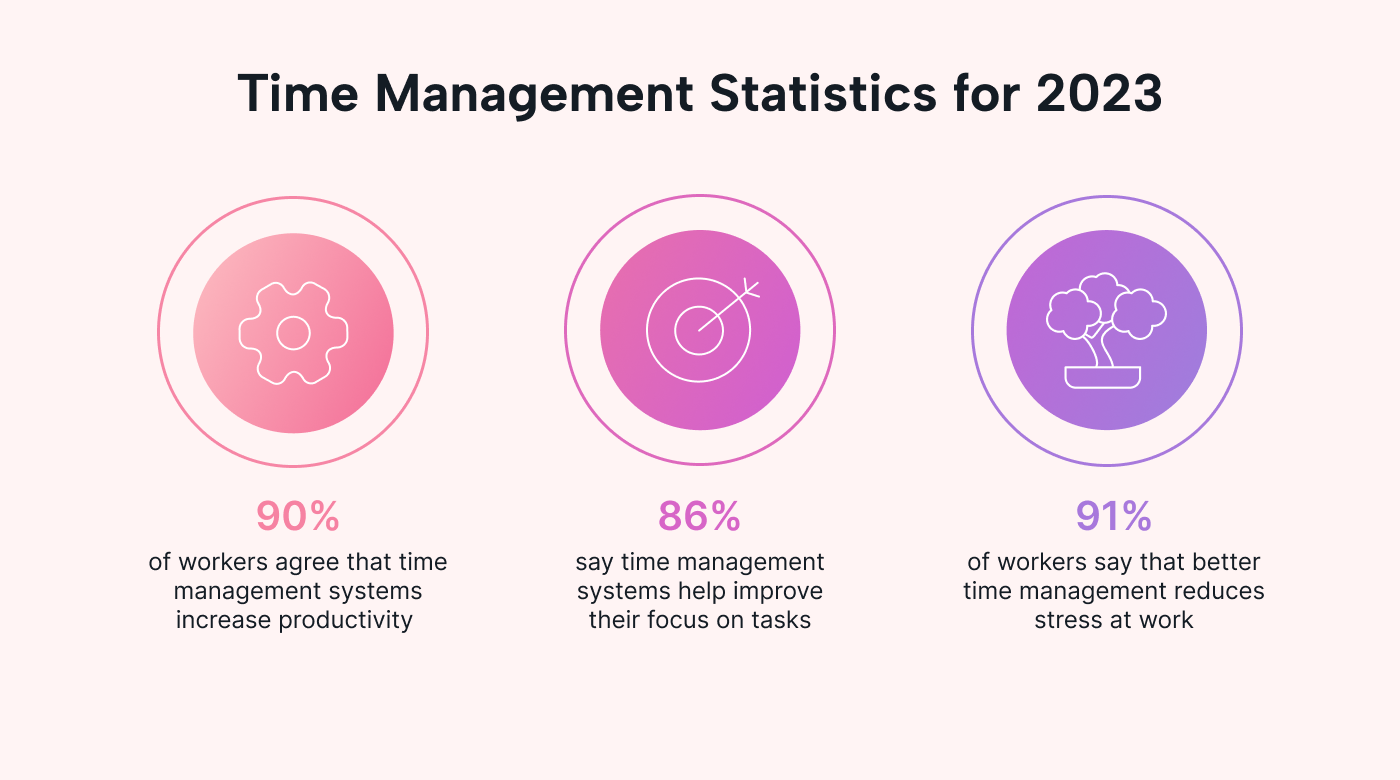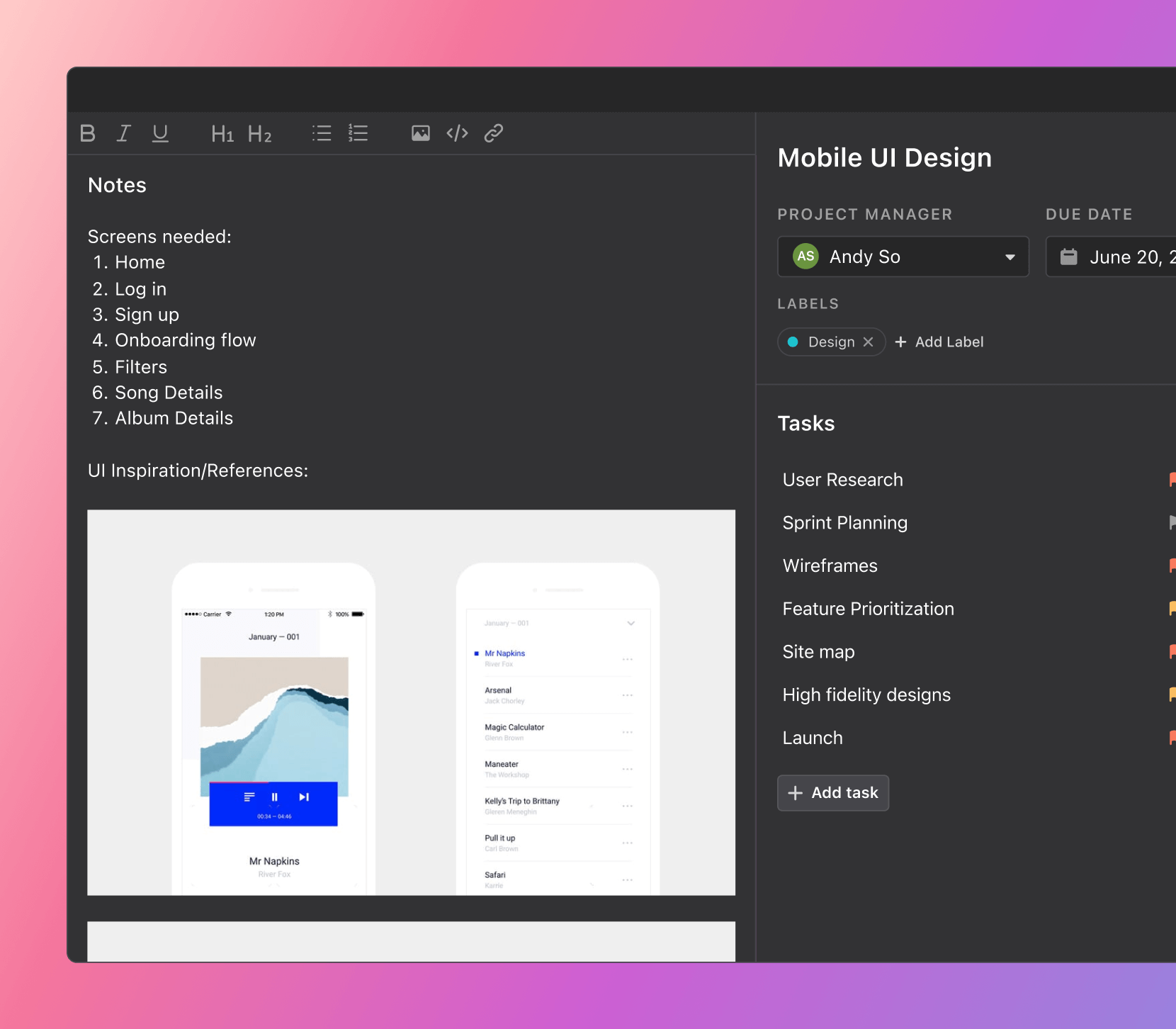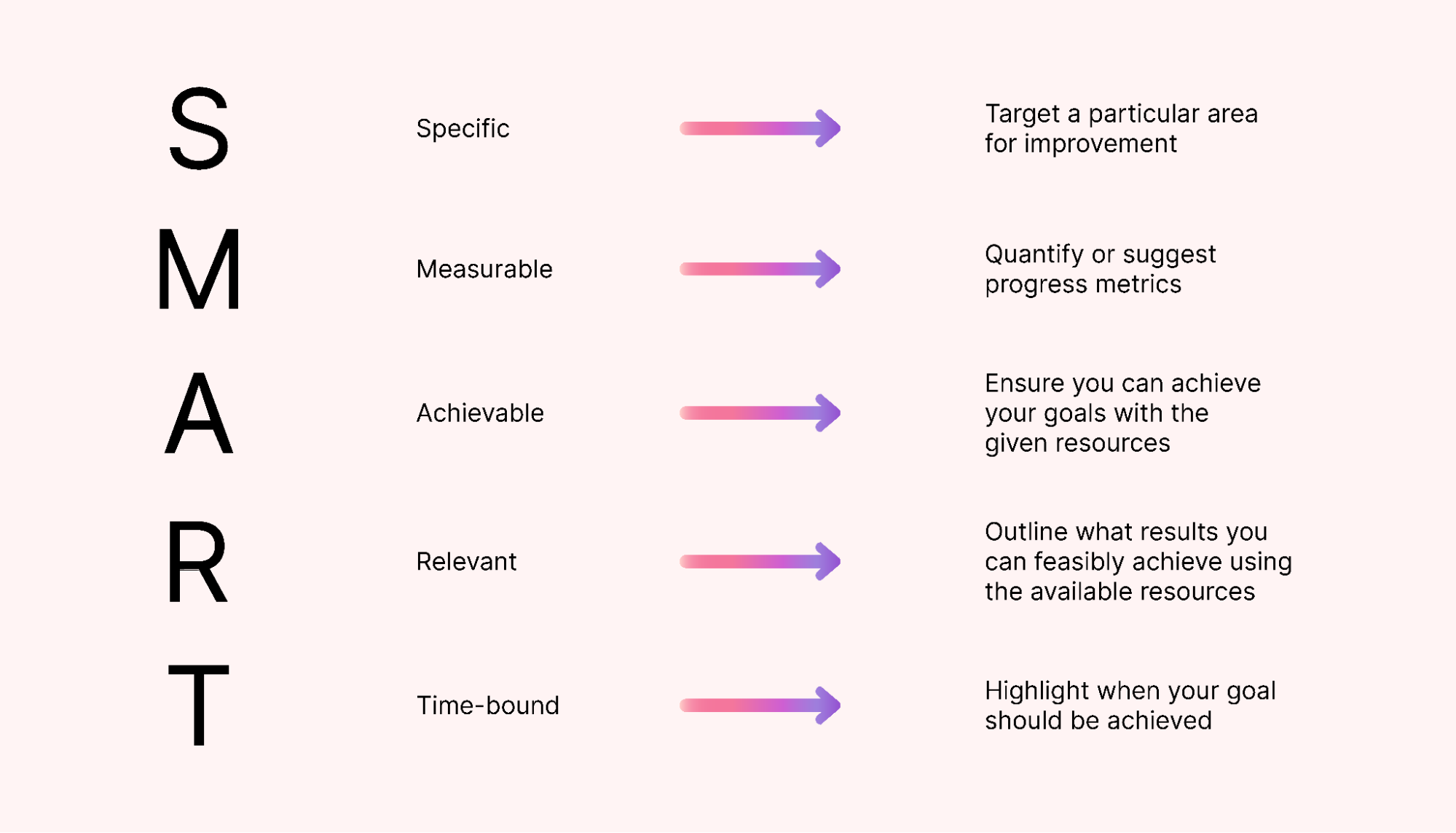Since only 12% of people have a dedicated time management system, it's no wonder that 45% of projects aren't completed on time.
Without a good plan to manage your time, you'll likely miss deadlines, overlook important tasks, and fall short of your strategic goals.
A time management plan helps you plan your time better. By giving yourself dedicated timeslots, you can prioritize tasks to hit deadlines.
Read on to learn how to create a time management plan that works. Discover top strategies for maintaining your plan and learn how Motion can streamline the process.
What’s a time management plan?
A time management plan is a structured approach to planning how you spend your time each day.
It’s a map of time blocks to help you prioritize and organize daily tasks so you know where to focus.
With your time mapped out, you’ll know exactly what to do at the right time so everything fits in.
Time management plans work best if you:
- Need to split big projects into accomplishable tasks and prioritize these tasks
- Have multiple projects running at once
- Manage multiple clients at once
Why is a time management plan so important? The benefits
Effective time management techniques can help you schedule time to meet realistic goals and attend to urgent tasks.
Here’s why you need a time management plan to streamline your workflow.
Improved productivity and focus
Workers agree that time management systems work.
90% say they increase productivity, and 86% say they improve focus.
 |
A time management plan tells you exactly what you should do and when. That way, you don’t waste energy switching between projects or juggling multiple tasks at once.
Plus, it helps you stay flexible.
With a clear task schedule, it's easier to work out which tasks (or clients) to reschedule if something urgent pops up unexpectedly.
Better decision-making
As you get the hang of your time management plan, you’ll start to notice patterns in how you work.
You might notice that Friday meetings often run over.
In your next plan, you block extra time for those meetings.
By consciously organizing tasks into blocks of time, it’s easier to see how long tasks realistically take.
This helps you make better decisions on how to organize your time.
Get more done
Everyone understands how work stress affects their performance. Nobody does their best work under mountains of pressure.
You burn out, forget tasks, and your work habits become inconsistent.
A notable 91% of workers agree that better time management reduces stress levels at work.
A time management plan helps you remember everything you need to do and when you need to do it.
This reduces the mental energy you waste on figuring out where to start.
As your time management strategies improve, you'll start to standardize how you commit your time.
You'll have a better grasp of how long meetings and tasks take, so it's easier to plan and prioritize to meet deadlines consistently.
How to create an effective time management plan in 9 steps
The ideal weekly schedule ensures you complete all critical tasks within the time limit and still have time to move your business forward.
Follow these steps to create a time management plan that slots everything in its place.
1. Audit your current schedule
Start by keeping track of where your time really goes.
Jot down everything.
Think about project tasks and admin work. Consider appointments, meetings, and steps you're taking for bigger business goals.
Understanding how each task eats into your day, week, or month is crucial.
This isn't just about guessing. It's about getting real data.
For a helping hand, consider using a time-tracking app.
They’re very helpful at showing you where you’re misjudging time. Check out some great time-tracking apps here.
2. Set clearly-defined SMART goals
Now, shape your goals. But, keep them SMART — specific, measurable, achievable, relevant, and time-bound.
Think about what you want to achieve in the long, medium, and short term.
Your goals need to be crystal clear and have a deadline.
For instance, in the next quarter, you might decide to:
- Wrap up three client projects
- Implement a new accounting software
- Consistently hold a daily 10-minute team meeting
Setting these SMART goals ensures your time management strategies are tied to measurable results.
3. Prioritize goals to organize tasks
Next, rank your goals by their importance and urgency.
Prioritizing goals helps you figure out which deserve the most time and attention. That way, you can realistically plan how you’ll commit to each goal — daily, weekly, or monthly.
4. Break down the work into actionable tasks
Slice up those big complex tasks into smaller tasks that you can knock out in a few hours or, at most, a day.
This approach makes even the most daunting projects feel less like a mountain and more like a series of small, climbable hills.
You set yourself up for achievable wins and consistent progress.
5. Allocate time blocks
Now, decide how much time each task gets.
Look back at your time-tracking audit.
You spend 60% of your time on client work, 10% on administrative tasks, and 10% on meetings. That leaves you 20% for business development.
Block out set times in your calendar for these activities.
For example, you might dedicate Tuesday mornings to admin or all day Friday to business development.
By allocating specific time blocks, you give each goal the focus it needs.
Rather take the guesswork out of organizing your schedule? Let Motion's AI-powered scheduling handle the heavy lifting for you.
6. Input detailed tasks
With your time blocks set, you need to fill them with work from your task list.
Detail every step you need to complete to reach your deliverables. Consider deadlines and priorities and slot these tasks into your time blocks accordingly.
Let’s look at this in action.
 |
Imagine a hairdresser who plans to boost clientele by 10% in three months, using Fridays for business development.
Fridays might involve tasks for a 3-month social media campaign. The tasks might include:
- Social ad training
- Creating and scheduling content
- Engaging with the audience
Each task is a step towards the larger goal, neatly fitted into an allocated time block.
7. Eliminate time sucks
You’ll immediately improve time management by identifying and removing time sucks.
This is a continuous process where you look for tasks that don't add value.
This could be a redundant monthly meeting when daily check-ins suffice. Or in-person client meetings when digital appointments would save travel time.
Also, consider inefficient processes. Time gets eaten up by cumbersome workflows.
Find tools to automate repetitive tasks to reduce admin and help you make timely decisions.
8. Plan for flexibility
Always be ready to shuffle tasks if priorities shift.
Flexibility is key in time management. If you can’t accommodate unexpected changes, you’ll drop the ball.
Have a plan for how you'll reprioritize if something urgent needs doing.
If you’re using Motion, its intelligent algorithms will automatically accommodate changing urgencies and reshuffle your calendar so everything still fits.
9. Keep your plan updated
Regularly refresh your time management plan.
Plan in a regular time block to update it.
This way, you're ready with a fresh, relevant plan for the next period, keeping your goals and tasks aligned with evolving priorities and outcomes.
Tips for creating a successful time management plan
Here’s some advice on using this effective strategy to optimize your daily schedule and consistently complete tasks on time.
Focus your efforts
Concentrate your time and attention on the right task at the right time. Here are a few techniques to help you do this:
- 80-20 rule: Focus on the high-priority tasks that provide the most significant outcomes. Pareto’s Principle says that 20% of your efforts yield 80% of results. So you might focus on your highest-paying 20% of clients, as they likely generate around 80% of your profits.
- Pomodoro technique: To maintain focus, work in short bursts with breaks. Try working 25-minute periods with 5-minute breaks. The Pomodoro Technique, developed by Francesco Cirillo, helps maintain consistent productivity.
- Eisenhower matrix: Distinguish urgent tasks from important ones. Do urgent, important jobs immediately. Schedule non-urgent, important activities. Delegate urgent, unimportant tasks. Delete anything that’s not urgent or important.
- Limit task switching: Multitasking kills productivity. Research shows that focusing on one task at a time is more efficient.
- Block distractions: Set specific email or social media times so they don’t interrupt your productive hours.
Be realistic about what’s achievable
We tend to overestimate time. We don’t commit to adequate time frames and then panic to fit everything in when the rubber meets the road.
Try this instead:
- Continuously audit time: Build on your original time audit. Keep a consistent record and add tasks you’ve forgotten or fix unrealistic time blocks.
- Plan for urgent changes: Reserve time blocks for unexpected changes. Either keep a time block free or block a session you can move.
- Plan from patterns to details: Create time blocks for your broader projects and goals, then drill down to add detailed tasks.
- Account for planning fallacy: Planning fallacy is when you underestimate the time you’ll need. Always plan based on your audit, and add some wiggle room.
- Avoid over-scheduling: Leave some 'white space' to buffer your schedule. These moments help if things overrun or provide quick breaks.
Use software
Time management tools can streamline scheduling, organize tasks, and automate changes.
With Motion, you cut out manual planning by 90%.
The powerful AI algorithms create your optimal personalized schedule, accommodating all your business activities in a manageable way.
Motion will automatically reorganize your time if priorities change without compromising deadlines or over-committing.
You can even synchronize schedules across teams so everyone’s on the same page.
Motion keeps your time management plan running smoothly
A time management plan helps you organize your time to reach your goals and meet deadlines.
But, to be effective, your time plan must stay up-to-date. This can be time-consuming in and by itself.
Streamline this process with Motion.
Use Motion’s AI-powered scheduling and reprioritization to optimize your timetable so you hit every deadline without ever missing a meeting again.
Try Motion today to create an intelligent schedule flexible to your needs.






